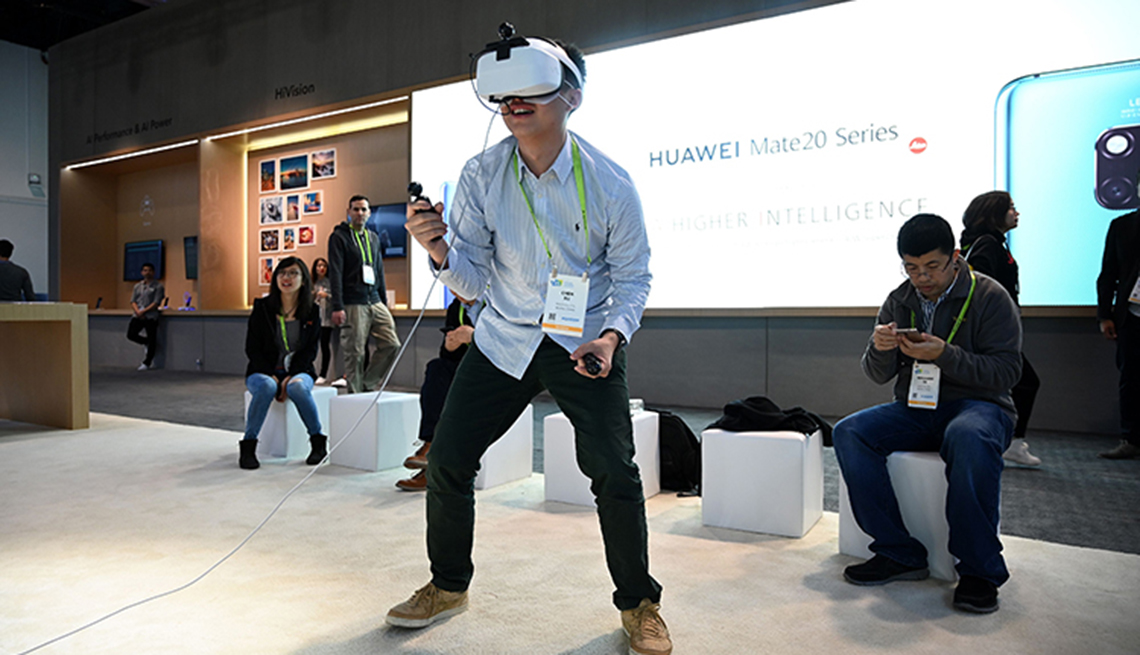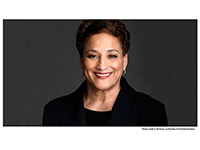At CES, Searching for New Products and Services Aimed at the 50+ Market
AARP spreads word on the power of ‘longevity economy’
En español | Lots of us grew up in towns that were smaller than CES, the global consumer electronics show held in Las Vegas each year in January. With more than 180,000 attendees, nearly 5,000 exhibitors, and miles of aisles, CES emerges as a city-within-a-city and, if you want to get a sense of what is happening in the tech sector, CES is an obvious destination.
AARP made the trip to CES this year with two very specific missions in mind: to spread the word on the relevance (and ever-growing power) of what we call the Longevity Economy, and to scope out new and interesting tech-based products and services that are focused on the unique interests and needs of people age-50-plus.
The Longevity Economy
But back to the Longevity Economy. It’s not just a buzz phrase, it’s a demographic sea change that’s already underway and one that gains momentum every day. In a nutshell, the world is growing older and it’s doing it quickly. The rough math is that over the next generation – i.e., by 2050 -- the world’s population of people age 60 and up will more than double to more than two billion people. Putting it another way, a little over 30 years from now, for every one person age 60-plus currently in your neighborhood or city or workplace, there will be two, or more. And the implications (whether positive, challenging or “to be determined”) are massive.
Meanwhile, in the here and now, the Longevity Economy is already the biggest consumer market there is. In the U.S. alone people age 50-plus generate $7.6 trillion of annual economic activity:
- which is equivalent to the third largest economy in the world,
- and it’s 51 cents of every dollar spent in the U.S.,
- which might be because 83% of household wealth in the US is held by people over 50.
Even so, the development of products and services focused on the unique interests and needs of people 50 and up have often been, for lack of a better term, an afterthought. With puzzling frequency, especially given the economic dynamics at hand, many manufacturers and service providers still focus primarily on winning over younger consumers and if older people are interested, too, well, that’s fine, but it’s not really the point.
Interesting Developments
However, as we saw this year at CES that’s starting to change. While there’s a lot more progress to be made, it’s clear that the tech industry is waking up to the power of the Longevity Economy and the opportunities presented by delivering solutions to people age 50 and up.
With that in mind, what follows is a quick summary of some (but certainly not all) of the new products and services that jumped out us at CES this year:
We’ve been impressed in the past by wearable heart monitors, normally in the form of watches, but were intrigued to see an emerging wave of wearable health monitors in the form of bracelets and pendants that use tiny nanotech gas sensors to check the glucose levels of diabetes patients and warn them when a hypo- or hyperglycemic episode is coming on and it can notify caregivers of the episode, too. And there’s clothing that can monitor your health, too. One example is a washable cotton-and-Lycra vest by French-based Chronolife which, although not yet approved by FDA, has sensors meant for monitoring electrical activity, breathing, body temperature and ominous physical activity such as falls. It will be interesting to see where these and other innovative product and service offerings end up.
One of the most notable developments we encountered at CES is a newly announced partnership between Cognitive, Plume, Qualcomm and Stanley Black & Decker for the launch of a Wi-Fi-based home security and remote monitoring service called Omni. At the risk of oversimplifying its capabilities, one of the things Omni can do is help someone, whether across town or on the other side of the country, know if someone is up and moving within their living space. Whereas motion detectors are normally focused on identifying intruders, if you think about it, the capability can also be useful for identifying whether an older person living on their own is up and about. Since one of the obstacles to aging in place can be concerns about safety for an older person living on their own, a service like Omni could be a useful resource for aging-in-place residents and those who care about them.
Fostering Competition, Driving Innovation
In closing, I would be remiss if I didn’t mention a pitch-competition, sponsored by AARP Innovation Labs, which brought together eight promising tech-focused start-ups and early-stage companies who are bringing to market products and services focused on people 50-plus and similar to TV’s Shark Tank, challenged them to present and defend their offerings and show how and why they could be of use for older people. The competition was fierce and while all of the competing entities were impressive, inevitably, judges had to narrow the field from eight companies to just two.
The two winners — StoryUP Healium and Waverly Labs — will compete again in October at a pitch finale at AARP’s national headquarters in Washington, D.C. StoryUP’s virtual reality (VR) device uses electroencephalogram (EEG) feedback to reduce stress and offer virtual travel opportunities to its users. Waverly’s earbud is able to interpret conversations almost in real time.
One of things we really appreciated about the pitch competition was that it enabled AARP to challenge the tech sector to come up with customized solutions for challenges faced by older people. In the case of StoryUP Healium it’s social isolation and for Waverly Labs it’s hearing loss. We’re already looking forward to the competition as it’s a great way to learn about, and even kick the tires of, innovative new offerings that could of potential use for older people.
Jo Ann Jenkins is CEO of AARP. She is the author of Disrupt Aging, now available in paperback.


